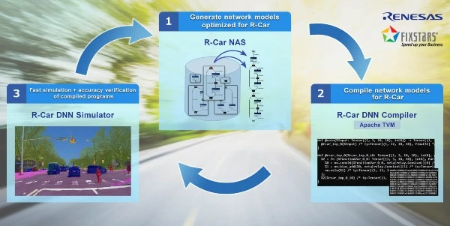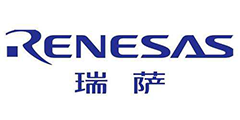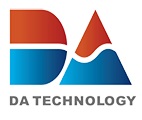- Ameya360 Component Supply Platform >
- Trade news >
- Renesas and Fixstars Developing Tools for AD, ADAS AI Software Optimization
Renesas and Fixstars Developing Tools for AD, ADAS AI Software Optimization
Renesas and Fixstars are developing a suite of tools that allows optimization and fast simulation of software for autonomous driving systems and ADAS.

Renesas Electronics Corp. and Fixstars Corp. are jointly developing a suite of tools that allows optimization and fast simulation of software for autonomous driving (AD) systems and advanced driver-assistance systems (ADAS) specifically designed for the R-Car system-on-chip (SoC) devices from Renesas.
These tools make it possible to rapidly develop network models with highly accurate object recognition from the initial stage of software development that take advantage of the performance of the R-Car. This reduces post-development rework and thereby helps shorten development cycles.
“Renesas continues to create integrated development environments that enable customers to adopt the ‘software-first’ approach,” said Hirofumi Kawaguchi, Vice President of the Automotive Software Development Division at Renesas. “By supporting the development of deep learning models tailored to R-Car, we help our customers build AD and ADAS solutions, while also reducing the time to market and development costs.”
“The GENESIS for R-Car, which is a cloud-based evaluation environment that we built jointly with Renesas, allows engineers to evaluate and select devices earlier in the development cycles and has already been used by many customers,” said Satoshi Miki, CEO of Fixstars. “We will continue to develop new technologies to accelerate machine learning operations (MLOps) that can be used to maintain the latest versions of software in automotive applications.”
Today’s AD and ADAS applications use deep learning to achieve highly accurate object recognition. Deep learning inference processing requires massive amounts of data calculations and memory capacity. The models and executable programs on automotive applications must be optimized for an automotive SoC, since real-time processing with limited arithmetic units and memory resources can be a challenging task. In addition, the process from software evaluation to verification must be accelerated and updates need to be applied repeatedly to improve the accuracy and performance.
Online messageinquiry

Renesas Adds Two New MCU Groups to Blazing Fast RA8 Series with 1GHz Performance and Embedded MRAM
- Week of hot material
- Material in short supply seckilling
| model | brand | Quote |
|---|---|---|
| TL431ACLPR | Texas Instruments | |
| MC33074DR2G | onsemi | |
| RB751G-40T2R | ROHM Semiconductor | |
| BD71847AMWV-E2 | ROHM Semiconductor | |
| CDZVT2R20B | ROHM Semiconductor |
| model | brand | To snap up |
|---|---|---|
| BU33JA2MNVX-CTL | ROHM Semiconductor | |
| ESR03EZPJ151 | ROHM Semiconductor | |
| IPZ40N04S5L4R8ATMA1 | Infineon Technologies | |
| STM32F429IGT6 | STMicroelectronics | |
| TPS63050YFFR | Texas Instruments | |
| BP3621 | ROHM Semiconductor |
- Week of ranking
- Month ranking
Qr code of ameya360 official account
Identify TWO-DIMENSIONAL code, you can pay attention to


Please enter the verification code in the image below:

























